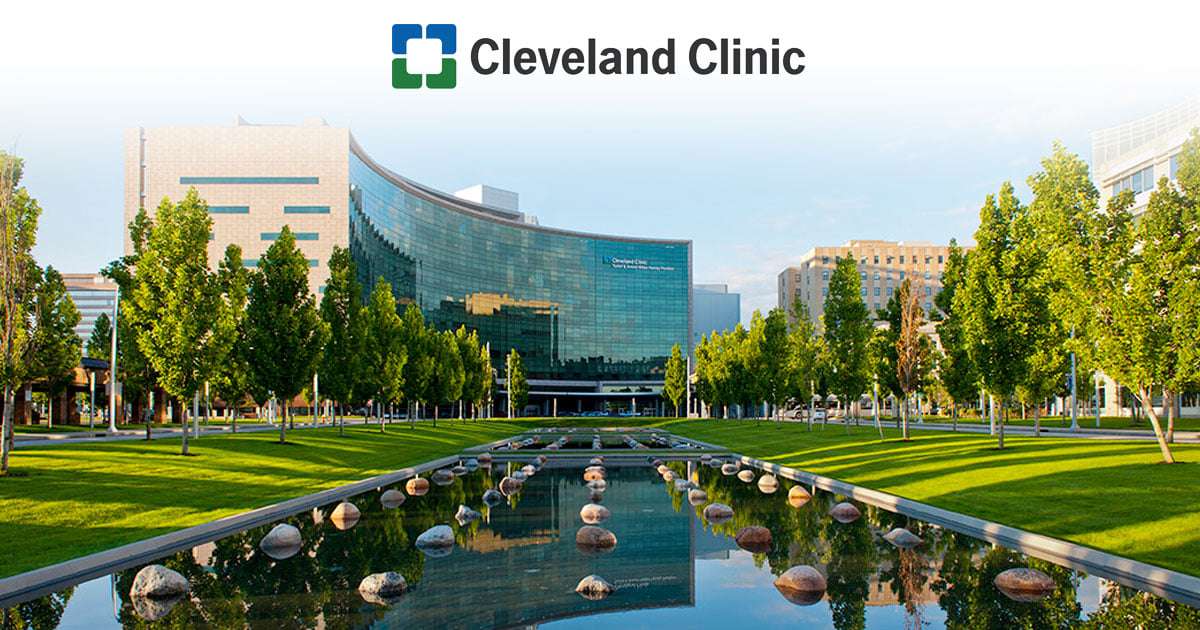What is red light therapy?
Red light therapy (RLT) is a treatment that uses low wavelength red light to reportedly improve your skin’s appearance, such as reducing wrinkles, scars, redness and acne. It’s also touted to treat other medical conditions.
To date, there’s a lot of ongoing research, publication of small studies and a much discussion on the internet about the effectiveness of red light therapy for all types of health uses. Results of some studies do show some promise, but the full effectiveness of red light therapy has yet to be determined.
Other names you might hear to describe red light therapy include:
- Low-level laser light therapy.
- Low-power laser therapy.
- Non-thermal LED light.
- Soft laser therapy.
- Cold laser therapy.
- Biostimulation, photonic stimulation.
- Photobiomodulation and phototherapy.
How did interest in red light therapy evolve?
NASA originally began experimenting with red light therapy on plant growth in space and then to help heal wounds in astronauts. Like many developments, other potential uses began to be investigated.
In fact, red light therapy is already widely medically accepted in its use in photodynamic therapy. In this therapy, low-power red laser light is used to activate a photosensitizer drug. The interaction creates a chemical reaction that destroys cells. It’s used to treat some skin conditions, including skin cancer and psoriasis, acne and warts and other types of cancer.
Now, RLT is being investigated (or already in use) for treating a wide array of health conditions. What’s confusing — and controversial — is the effectiveness of the treatment for the purposes it’s being promoted.
How does red light therapy supposedly work?
Red light therapy is thought to work by acting on the “power plant” in your body’s cells called mitochondria. With more energy, other cells can do their work more efficiently, such as repairing skin, boosting new cell growth and enhancing skin rejuvenation. More specifically, certain cells absorb light wavelengths and are stimulated to work.
Red light therapy may work in skin health to:
- Stimulate collagen production, which gives skin its structure, strength and elasticity.
- Increase fibroblast production, which makes collagen. Collagen is a component of connective tissue that builds skin.
- Increase blood circulation to the tissue.
- Reduce inflammation in cells.
For what skin conditions is red light therapy being tried?
Red light therapy is promoted as a treatment for some common skin conditions, including to:
- Improve wound healing.
- Reduce stretch marks
- Reduce wrinkles, fine lines and age spots.
- Improve facial texture.
- Improve psoriasis, rosacea and eczema.
- Improve scars.
- Improve sun-damaged skin.
- Improve hair growth in people with androgenic alopecia.
- Improve acne.
Is red light therapy effective?
Most experts say that they don’t know yet if RLT is effective for all its claimed uses. Most say that the studies published so far show some potential for certain conditions, but that more studies need to be conducted. Red light therapy is still an emerging treatment that’s generating growing interest. But at this point in time, there’s not enough evidence to support most uses.
The gold standard of studies to determine if a product is effective is a randomized, placebo-controlled trial. This means that a certain number of people with the same range of characteristics (age, weight, race, gender, etc.) get either the study treatment or a placebo (fake or “sham” treatment) for treatment of the same condition. Some studies also include a comparison to another commonly used treatment. Results can then be compared between the emerging treatment versus no treatment (the placebo group) or versus a “current standard” treatment.
Many of the published studies using RLT included only a small number of people, didn’t include a placebo group, weren’t conducted in humans (animal studies) or were limited to cell tissue itself. Most researchers say results so far look promising, but that more quality studies with larger numbers of people are needed.
Is red light therapy safe?
Red light therapy appears to be safe and is not associated with any side effects, at least if used short-term and as directed. This therapy is not toxic, not invasive and not as harsh as some topical skin treatments. Unlike the cancer-causing ultraviolet (UV) light from the sun or tanning booths, RLT doesn’t use this type of light.
However, if products are misused — perhaps used too often or not according to directions — there’s a chance your skin or eyes (if not protected) could be damaged. The long-term safety of devices that use red light therapy is not yet known.
Your safest option is to see a dermatologist or qualified, trained, cosmetic therapist. A dermatologist can make sure your skin condition is what you think it is and can discuss the merits of red light therapy and other treatment options.
Are devices purchased for at-home use a safe, reasonable option?
You’ll find many red light therapy products if you search on the internet. While these products are generally safe to use, they may use a lower wavelength frequency (meaning they’re less powerful) than devices that may be used by dermatologists or other trained skin professionals. You may not get the results you hope for.
If you do choose to purchase a red light therapy device, make sure to shield your eyes for protection, follow all directions and take good care of the device.
In addition to medical office-based use and at-home use with a purchased device, you may see RLT being promoted at beauty spas and salons, saunas, tanning salons, gyms and wellness centers. Be cautious of who is supplying and where you are receiving treatment. It’s always best to check in with a medical professional about the best options to treat your skin condition or issue.
What other medical conditions is red light therapy being promoted for?
Other potential medical uses being investigated include:
- To reduce cancer chemotherapy side effects, including oral mucositis.
- To relieve pain and inflammation associated with ankle tendonitis, rheumatoid arthritis, carpal tunnel syndrome and osteoarthritis of the knee.
- To prevent cold sores from herpes simplex virus from recurring.
Lots of other uses are being touted on the internet. There’s no scientific evidence to support red light therapy use in weight loss, cancer, cellulite removal or mental health concerns like depression and seasonal affective disorder (SAD).
What else do I need to know about red light therapy?
There are a lot of variables to consider when thinking about red light therapy:
- Is RLT covered by my health insurance? Red light therapy is typically not a covered treatment. You may want to call your health insurance company before seeking treatment.
- How many treatments will I need? You’ll likely need ongoing treatments. This is not a one-time treatment for most skin conditions. You’ll need to be seen one to three times a week for weeks or even months. Also, is there a need for additional touch-up treatments? This may add up to a lot of time and considerable out-of-pocket costs.
- Will I achieve the desired results? Everyone’s skin is different so results can vary. Also, the wavelength of the red light source ranges. The wavelength affects how deeply the light penetrates your skin. The wavelength of the red light device being used in a doctor’s office versus in your at-home device could affect your desired result.
- Do you trust the experience of the person providing the red light therapy? For example, is a tanning salon a place you feel comfortable receiving this treatment or might it be better to first be seen and possibly treated by a medical professional?
- Is red light therapy an appropriate treatment for my skin condition? Are other, more scientifically vetted approaches a better choice for my skin condition? See your healthcare provider to confirm a diagnosis and discuss appropriate treatment options.
A note from Cleveland Clinic
Red light therapy is being promoted as a treatment for some common skin conditions. It’s still an emerging therapy but holds a lot of promise. If you’re interested in RLT treatment, it’s best to first discuss this with your healthcare provider or dermatologist. Your skin professional will examine your skin first and then confirm a diagnosis. Then, you’ll work together to discuss treatment options that’ll achieve your desired result. Options may or may not include red light therapy. Never hesitate to ask your healthcare provider about treatment options — including if you have an interest in a particular therapy, if it’s appropriate to use for your skin condition and if it’s safe and effective.
We include products we think are useful for our readers. If you buy through links on this page, we may earn a small commission. Here’s our process.
Healthline only shows you brands and products that we stand behind.
Our team thoroughly researches and evaluates the recommendations we make on our site. To establish that the product manufacturers addressed safety and efficacy standards, we:
- Evaluate ingredients and composition: Do they have the potential to cause harm?
- Fact-check all health claims: Do they align with the current body of scientific evidence?
- Assess the brand: Does it operate with integrity and adhere to industry best practices?
We do the research so you can find trusted products for your health and wellness.
Read more about our vetting process.
What is red light therapy?
Red light therapy (RLT) is a controversial therapeutic technique that uses red low-level wavelengths of light to treat skin issues, such as wrinkles, scars, and persistent wounds, among other conditions.
In the early 1990s, RLT was used by scientists to help grow plants in space. The scientists found that the intense light from red light-emitting diodes (LEDs) helped promote growth and photosynthesis of plant cells.
Red light was then studied for its potential application in medicine, more specifically to find out if RLT could increase energy inside human cells. The researchers hoped that RLT could be an effective way to treat the muscle atrophy, slow wound healing, and bone density issues caused by weightlessness during space travel.
You may have heard of red light therapy (RLT) by its other names, which include:
- photobiomodulation (PBM)
- low level light therapy (LLLT)
- soft laser therapy
- cold laser therapy
- biostimulation
- photonic stimulation
- low-power laser therapy (LPLT)
When RLT is used with photosensitizing medications, it’s referred to as photodynamic therapy. In this type of therapy, the light only serves as an activating agent for the medication.
There are many different types of red light therapy. Red light beds found at salons are said to help reduce cosmetic skin issues, like stretch marks and wrinkles. Red light therapy used in an medical office setting may be used to treat more serious conditions, like psoriasis, slow-healing wounds, and even the side effects of chemotherapy.
While there’s a fair amount of evidence to show that RLT may be a promising treatment for certain conditions, there’s still a lot to learn about how it works, too.
How does red light therapy work?
Red light is thought to work by producing a biochemical effect in cells that strengthens the mitochondria. The mitochondria are the powerhouse of the cell — it’s where the cell’s energy is created. The energy-carrying molecule found in the cells of all living things is called ATP (adenosine triphosphate).
By increasing the function of the mitochondria using RLT, a cell can make more ATP. With more energy, cells can function more efficiently, rejuvenate themselves, and repair damage.
RLT is different from laser or intense pulsed light (IPL) therapies because it doesn’t cause damage to the skin surface. Laser and pulsed light therapies work by causing controlled damage to the outer layer of the skin, which then induces tissue repair. RLT bypasses this harsh step by directly stimulating regeneration of the skin. The light emitted by RLT penetrates roughly 5 millimeters below the skin’s surface.
Are there similar treatment options?
Red light wavelengths aren’t the only wavelengths to be studied for medical purposes. Blue light, green light, and a mixture of different wavelengths have also been the subject of similar experiments in humans.
There are other kinds of light-based therapies available. You can ask your doctor about:
- laser treatments
- natural sunlight
- blue or green light therapy
- sauna light therapy
- ultraviolet light B (UVB)
- psoralen and ultraviolet light A (PUVA)
Choosing a provider
Many tanning salons, gyms, and local day spas offer RLT for cosmetic applications. You can also find FDA-approved devices online that you can purchase and use at home. Prices will vary. You can try using these devices to combat the signs of aging, like age spots, fine lines, and wrinkles, but make sure to read the instructions carefully. Check out some devices online.
For more targeted RLT, you’ll need to see a dermatologist first. You may need several treatments before you notice any difference.
To treat serious medical conditions, like cancer, arthritis, and psoriasis, you should make an appointment with your doctor to discuss your options.
Side effects
Red light therapy is considered safe and painless. However, there have been reports of burns and blistering from using RLT units. A few people developed burns after falling asleep with the unit in place, while others experienced burns due to broken wires or device corrosion.
There’s also a potential risk of damage to the eyes. Although safer on the eyes than traditional lasers, proper eye protection may be necessary while undergoing red light therapy.
Takeaway
RLT has shown promising results in treating some skin conditions, but within the scientific community, there’s not much consensus about the treatment’s benefits. Based on the current research, you may find that RLT is a good tool to add to your skin care regimen. Always check with your doctor or dermatologist before trying something new.
You can easily purchase red light devices online, but it’s best to get a doctor’s opinion on any symptoms before you try to self-treat. Keep in mind that RLT isn’t FDA-approved for most conditions or covered by insurance companies. Any serious condition, like psoriasis, arthritis, slow-healing wounds, or pain should be checked out by a doctor.



